Using Squarebill Crankbaits for Bass Attraction
Squarebill Crankbaits: Effective Bass Attractors
Introduction
Fishing is a sport that has been enjoyed by many people for generations. It’s an activity that requires patience, skill, and the right equipment.
Squarebill Crankbaits are one of the most effective types of lures when it comes to catching bass. These lures have been used by professional anglers and amateurs alike to catch trophy-sized fish.
Explanation of Squarebill Crankbaits
Squarebill crankbaits are a type of fishing lure that is designed to mimic the movement of small baitfish in the water. They come in various sizes, colours, and designs but all share one common feature: a square-shaped lip at the front of the bait.
This square-shaped lip causes the bait to deflect off objects like rocks, stumps or other aquatic vegetation which can trigger an aggressive response from nearby fish. The deflective action also creates a unique wobbling action which mimics real prey movement and attracts fish.
Importance of Squarebill Crankbaits in Bass Fishing
Bass fishing is one of America’s most popular pastimes and an important industry. As one might expect, there are many different lures available to anglers when targeting this species that range from soft plastics to topwater frogs.
However, none rival squarebill crankbaits when it comes to effectiveness. During certain times throughout the year or under specific environmental conditions (such as clear water), natural prey isn’t as abundant causing bass to become more selective about what they eat.
This is where squarebills shine – their realistic movements not only attract fish but fool them into thinking it’s real prey which increases chances for successful strikes. Squarebill crankbaits are essential tools for any angler looking to catch bass consistently.
Their unique design and action make them an effective lure in a variety of environments, including when other lures fail to produce results. The rest of this article will dive deeper into how squarebills are constructed, how they work, and tips on how to use them effectively in different scenarios.
Anatomy of a Squarebill Crankbait
Body Shape and Size
The body shape and size of a squarebill crankbait can greatly affect its performance in the water. These lures are characterized by their short, stocky shape, which gives them their signature wobbling action.
The body size can range from as small as 1 to 2 inches in length for smaller species such as crappie and panfish, up to 4 or 5 inches for larger game fish like bass or pike. The weight of the lure is also an important factor in determining its buoyancy, diving depth and casting distance.
A heavier lure will sink faster and require a thicker line or heavier gear to cast effectively. Conversely, a lighter lure may require finesse tactics or smaller gear to achieve the desired action.
Lip Design and Angle
The lip design and angle on a squarebill crankbait determines how deep it will dive when retrieved through the water. Generally speaking, a steeper angled lip will cause the bait to dive deeper while a shallower angle will keep it closer to the surface. Another important consideration is the shape of the lip itself – some lures may have rounded or concave lips that create more vibration and turbulence in the water while others may be flat or angled differently for more subtle movement.
Hook Placement and Size
The position of hooks on a squarebill crankbait can have an impact on both its effectiveness at hooking fish as well as how easily it snags on underwater obstacles like rocks or vegetation. Some designs feature treble hooks mounted near the front of the bait which allows for more precise targeting but can also cause tangling or snags if not retrieved properly.
Other designs may feature hooks positioned further back along with weighting towards the tail section of the lure, creating a more balanced and stable retrieve. The size of the hooks is also important to consider – larger hooks may be necessary for larger fish species, but can also impede the action of the bait and reduce its effectiveness.
How Squarebill Crankbaits Work
Water Resistance and Deflection
When fishing with squarebill crankbaits, one of the biggest advantages is their ability to deflect off underwater structures such as rocks, stumps, and brush. This deflection causes the bait to change direction and creates a sudden movement that can trigger a bite from the bass.
The squarebill design also creates a lot of water resistance, which makes the lure wobble side to side as it’s pulled through the water. This action mimics the movement of prey fish and can be irresistible to hungry bass.
One way to maximize the effectiveness of squarebill crankbaits is by using them in shallow water where there are plenty of obstructions for them to deflect off. The shallow depth range allows you to keep your bait in the strike zone for longer periods, giving the bass more opportunities to attack.
Sound and Vibration Production
Squarebill crankbaits produce sound and vibration as they move through the water. The lip design plays a significant role in creating this action.
When moving at high speeds or colliding with underwater objects, squarebills create a knocking sound that imitates fish feeding activity. This noise attracts nearby predators by signaling an opportunity for an easy meal.
The sound produced by squarebills is especially effective in murky or dirty water conditions where visibility is limited for predators. In these situations, bass relies heavily on their sense of hearing and lateral line system to detect prey activity.
Triggering the Aggressive Response in Bass
Squarebill crankbaits are designed with a unique action that produces erratic movements when retrieved at high speeds or bounced off underwater structures. These sudden movements simulate an injured or fleeing prey fish trying to escape from danger, triggering an aggressive response from nearby predators. It’s important when fishing with squarebills not only to consider the deflection, sound, and vibration production of the lure but also how you are retrieving it.
Experiment with different speeds and retrieves until you find the one that triggers the most bites. Fishing with squarebills can be a highly effective way to catch more bass and gain an advantage over other anglers.
Choosing the Right Squarebill Crankbait for Different Conditions
Water Clarity
The clarity of the water plays a crucial role in determining the type of squarebill crankbait to use. In clear water, fish can easily detect lures and are more wary of anything that seems unnatural.
A subtle approach is often necessary for these conditions, so using a squarebill with natural colours and a more realistic look is recommended. Such as natural green or brown colour with metallic flakes.
In stained water, however, fish have limited visibility and rely on their other senses to detect prey. In these conditions, it’s best to use squarebills with bright or fluorescent colours that will be easier for fish to spot from a distance.
Colours like chartreuse or fire tiger are good choices here. Muddy water is perhaps the most challenging condition for fishing with squarebill crankbaits.
The lack of visibility means that everything needs to be louder and brighter than usual. Choosing a squarebill crankbait with lots of rattles will help create noise and vibration that will attract fish even in murky waters.
Depth Range
The depth range of your fishing area also plays an important role in selecting the right squarebill crankbait for your needs. For shallow waters (around 1-4 feet deep), you’ll want a shallow diving squarebill crankbait.
These lures have smaller lips which allow them to swim at shallower depths without hooking onto any submerged obstacles such as rocks or logs. They are generally lighter as well making them easier for anglers to control while casting.
Medium diving squarebill crankbaits are perfect when you need more depth coverage often around 5-8 feet deep waters. With longer lips than shallow divers, they can swim deeper while still avoiding obstructions like rocks or weeds.
Deep diving squarebill crankbaits are best suited to fishing in deep waters (8-12 feet or more). These lures have the longest lip and are generally heavier to help them sink down into the water column quickly.
The deeper diving capability of these baits makes them ideal for targeting bigger, trophy-sized fish that lurk in deeper waters. Choosing the right squarebill crankbait for different conditions is key to a successful fishing trip.
Pay close attention to the water clarity and depth range of your target area when selecting your lure, and always be prepared with a variety of options to ensure you can adjust as needed throughout the day. With a bit of skill and patience, you’ll soon be reeling in more fish than you ever thought possible.
Techniques for Fishing with Squarebill Crankbaits
Topwater Retrieve Techniques
Squarebill crankbaits can be fished on the surface, making them an excellent choice for topwater fishing. One of the most effective techniques is steady retrieve. This involves reeling in the bait at a constant speed, mimicking a small fish swimming across the surface.
It’s important to keep a close eye on your line, as bass will often hit the lure as soon as it hits the water. Another technique is the stop-and-go retrieve.
This involves reeling in the bait and then pausing it for a few seconds, causing it to pop and gurgle on the surface. This mimics a wounded or struggling fish, which can trigger an aggressive response from nearby bass.
Experiment with different pause times to see what works best in your particular fishing conditions. The twitching technique is another topwater option that can be highly effective in getting bites from wary or finicky fish.
To execute this technique, give your rod tip quick jerks to make the bait dance and dart across the surface of the water. The sudden movements can mimic prey struggling on top of open water and trigger an instinctual feeding response from lurking bass.
Subsurface Retrieve Techniques
While squarebill crankbaits are primarily thought of as topwater lures, they can also be fished below the surface with great success using subsurface retrieves. One popular subsurface retrieve technique is dubbed “yo-yo-ing.” To use this technique, cast your lure out and let it sink down to its maximum diving depth before starting your retrieve; then jerk up sharply before letting it dive back down again and repeating until you get bites. Another popular subsurface retrieve method is known as “cranking.” This involves reeling in your squarebill crankbait at one steady speed, often imitating a baitfish swimming through the water column.
Experiment with different speeds and depths to see what works best for your particular fishing conditions. “bumping” can be an effective technique in shallower water or around cover.
The key here is to subtly bump the lure into rocks, trees, or other cover to create a natural movement. This technique is highly effective in drawing out bass that are hiding among vegetation or other structures.
Conclusion
Squarebill crankbaits are versatile lures that can be fished effectively using a range of retrieve techniques. Experimenting with different techniques and speeds will help you figure out what works best for your particular fishing conditions.
Whether you’re fishing on the surface or below, these lures can be highly effective in attracting bites from the bass. Fishing with squarebill crankbaits requires patience and practice, but the reward of catching big bass is worth it.
With their unique design and proven track record for attracting fish, squarebill crankbaits should definitely have a place in any angler’s tackle box. So next time you head out on the water, give these versatile lures a try and see what kind of success you can have!
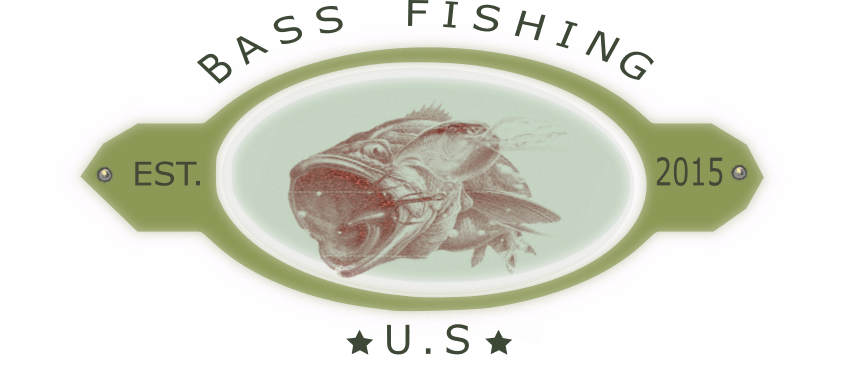
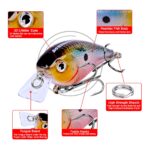
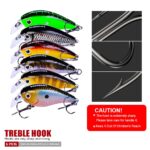



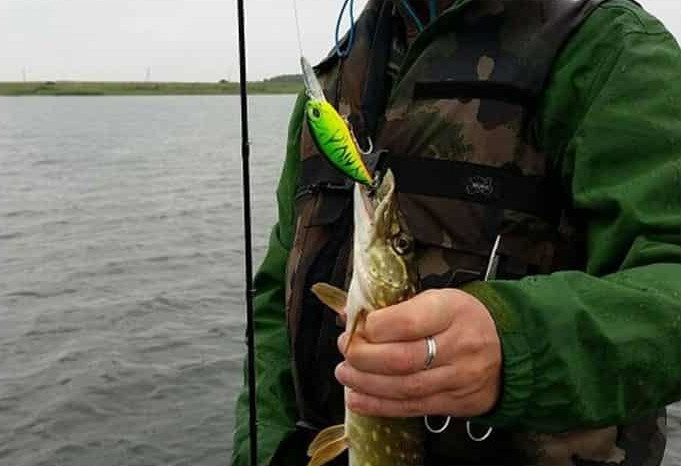
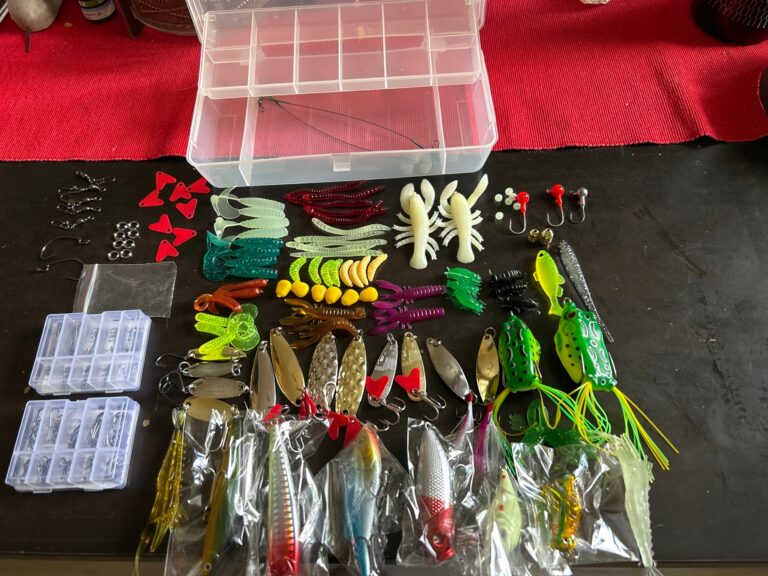

Leave a comment